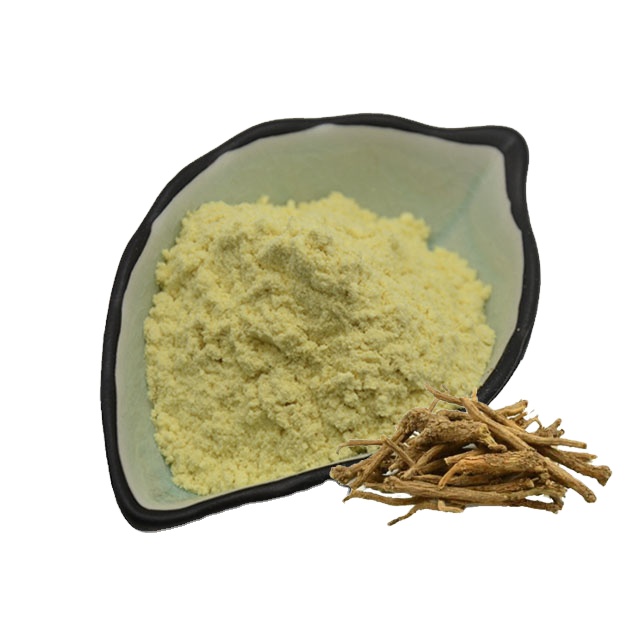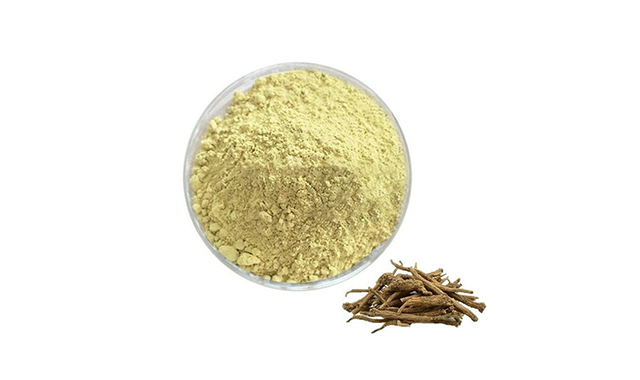Formulating with Baicalin: Tips for Nutraceutical Brands
2025-08-15 10:30:32
Baicalin, a potent flavonoid derived from Scutellaria baicalensis, has gained significant attention in the nutraceutical industry due to its diverse health benefits. For brands looking to harness the power of this compound, understanding the intricacies of formulating with baicalin is crucial. This article explores key considerations for incorporating baicalin extract and baicalin powder into nutraceutical products. We'll delve into challenges faced during formulation, strategies for optimizing bioavailability, and innovative delivery systems to maximize efficacy. By mastering these aspects, nutraceutical brands can create high-quality products that fully leverage baicalin's therapeutic potential.

What Challenges Arise When Incorporating Baicalin into Formulas?
Solubility Limitations
A significant challenge in incorporating baicalin into formulations is its poor water solubility. Both baicalin extract and baicalin powder exhibit limited dissolution in aqueous environments, which can negatively affect absorption and bioavailability. This requires formulators to carefully select excipients and potentially incorporate solubility enhancers such as surfactants or co-solvents. Optimizing the formulation matrix to overcome these solubility issues is crucial for ensuring that the active compound is effectively delivered and can exert its intended biological effects.
Stability Concerns
Baicalin's chemical stability is sensitive to environmental factors like pH, temperature, and light exposure, which can degrade its potency over time. Maintaining the stability of baicalin throughout a product's shelf life demands stringent formulation strategies. These may include adjusting the pH of the formulation, using antioxidants, and employing protective packaging such as amber bottles or opaque containers. Ensuring stability is essential to preserve the compound's therapeutic efficacy and guarantee consistent performance in the final product.
Taste and Sensory Properties
The naturally bitter taste of baicalin presents challenges, particularly in oral formulations where consumer acceptance is critical. To create palatable products, formulators often need to apply taste-masking techniques, such as using flavor enhancers, sweeteners, or encapsulation methods. Innovative delivery systems like coated tablets or encapsulated powders can also help minimize the bitter flavor without reducing the active ingredient's effectiveness. Addressing taste issues is vital to improving user compliance and satisfaction with baicalin-containing products.
Solubility, Stability, and Bioavailability Optimization Strategies
Enhancing Solubility
To overcome baicalin's poor water solubility, formulators can employ various techniques. Micronization of baicalin powder can increase its surface area, promoting dissolution. Additionally, utilizing water-soluble carriers or complexation with cyclodextrins can significantly improve the compound's solubility profile. These approaches not only enhance dissolution but also contribute to improved bioavailability.
Ensuring Stability
Maintaining baicalin's stability throughout product development and storage is paramount. Antioxidants and chelating agents can be incorporated to protect baicalin from oxidation. pH adjustment and buffer systems help create an optimal environment for baicalin stability. Furthermore, selecting appropriate packaging materials that shield the product from light and moisture can extend shelf life and preserve potency.
Boosting Bioavailability
Enhancing baicalin's bioavailability is crucial for maximizing its therapeutic effects. Formulation strategies such as using lipid-based delivery systems or nanoparticle encapsulation can significantly improve absorption. Additionally, co-administration with compounds that inhibit efflux transporters or enhance permeability can further boost bioavailability, allowing for more efficient utilization of baicalin in the body.

Delivery Systems for Maximum Efficacy in Finished Products
Nanoencapsulation Technologies
Nanoencapsulation is an innovative strategy that significantly enhances baicalin's stability and bioavailability. By enclosing baicalin extract or powder within nanoscale carriers like liposomes, polymeric nanoparticles, or solid lipid nanoparticles, formulators can protect it from degradation caused by environmental factors. These nano-sized systems improve cellular uptake and allow for targeted delivery and controlled release. The diverse nanocarrier options provide formulators with flexibility to optimize product performance, ensuring baicalin's therapeutic benefits are maximized in finished skincare or nutraceutical products.
Emulsion-Based Systems
Emulsion-based delivery systems such as nanoemulsions and microemulsions offer effective solutions to baicalin's solubility challenges. These systems dissolve baicalin in their lipid phase while maintaining clarity and stability, which enhances the overall formulation aesthetics. Furthermore, emulsions improve oral bioavailability by promoting better absorption in the gastrointestinal tract and enhance dermal penetration when applied topically. This versatility makes emulsion-based systems a popular choice for incorporating baicalin into a wide range of product formats including creams, serums, and oral supplements.
Advanced Solid Dosage Forms
Advanced solid dosage technologies can substantially improve baicalin's dissolution and bioavailability in nutraceutical applications. Techniques like solid dispersions allow baicalin to be molecularly dispersed within a carrier matrix, accelerating its release and absorption. Additionally, co-crystal formation with appropriate coformers can enhance solubility and stability. These sophisticated delivery methods facilitate the development of high-performance tablets, capsules, or powders, offering consumers effective and convenient ways to benefit from baicalin's health properties with improved consistency and potency.
Conclusion
Formulating with baicalin presents both challenges and opportunities for nutraceutical brands. By addressing solubility and stability issues, optimizing bioavailability, and leveraging advanced delivery systems, manufacturers can create high-quality products that harness the full potential of baicalin extract and baicalin powder. As research in this area continues to evolve, staying informed about the latest formulation techniques and technologies will be crucial for brands looking to differentiate themselves in the competitive nutraceutical market.
Contact Us
For nutraceutical brands seeking to explore the potential of baicalin in their product lines, partnering with experienced suppliers and formulators is key. To learn more about incorporating high-quality baicalin extract and baicalin powder into your formulations, contact Hubei Sanxin Biotechnology Co., Ltd. at Andy@sanxinbio.com. Our team of experts can provide guidance on optimizing baicalin-based products for maximum efficacy and consumer appeal.
References
1. Zhang, L., et al. (2021). "Baicalin and its nanoformulations for drug delivery: A comprehensive review." European Journal of Pharmaceutical Sciences, 158, 105676.
2. Chen, H., et al. (2020). "Baicalin and its derivatives: therapeutic applications in inflammatory diseases and cancer." Expert Opinion on Therapeutic Patents, 30(5), 339-355.
3. Li, Y., et al. (2019). "Nanoencapsulation of baicalin: Preparation, characterization, and in vitro release kinetics." Journal of Drug Delivery Science and Technology, 52, 426-434.
4. Wang, X., et al. (2018). "Baicalin-loaded PEG-PLGA nanoparticles: preparation, characterization and in vitro and in vivo evaluation." International Journal of Nanomedicine, 13, 2053-2067.
5. Zhao, L., et al. (2017). "Nanoemulsion improves the oral bioavailability of baicalin in rats: in vitro and in vivo evaluation." International Journal of Nanomedicine, 12, 2923-2939.
6. Huang, Y., et al. (2016). "Formulation and evaluation of baicalin-loaded microemulsions for improved oral bioavailability." Drug Delivery, 23(9), 3452-3460.